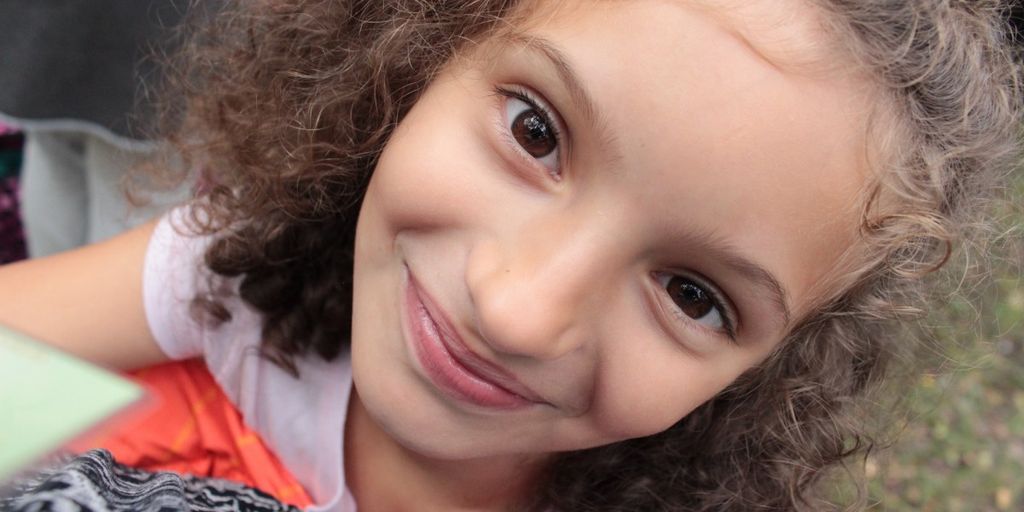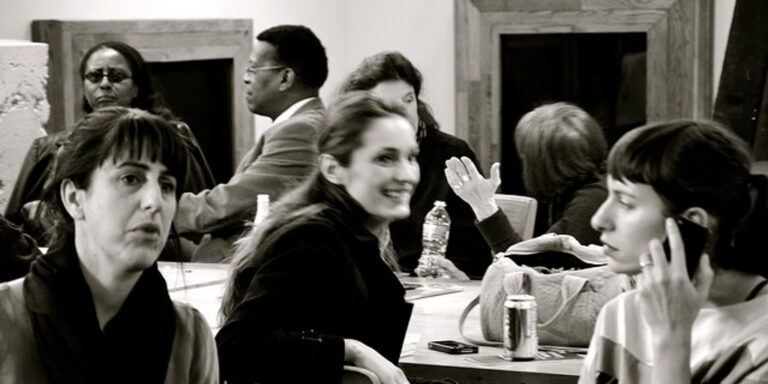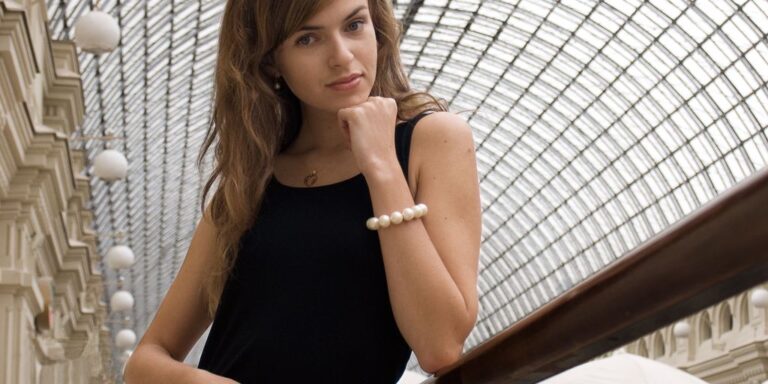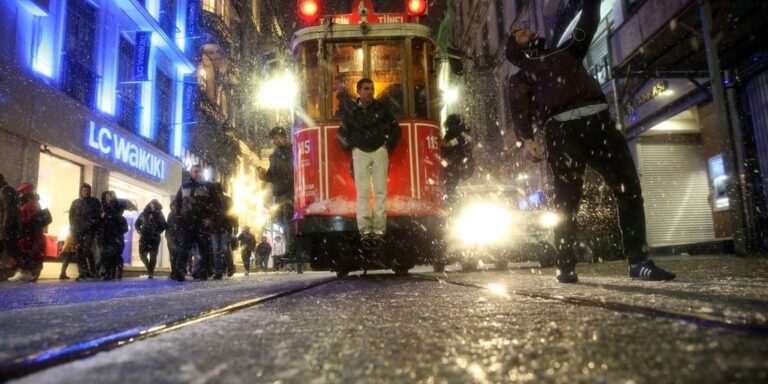The portrayal of beautiful Russian women in nude art has long sparked debates around the world. This article delves into the complex interplay between artistic expression and exploitation, exploring various perspectives to understand the ethical, cultural, and societal implications.
Key Takeaways
- The debate over nude portrayals is deeply rooted in cultural, ethical, and societal considerations, reflecting differing views on decency, objectification, and artistic freedom.
- Historical shifts in Russia from the Tsarist era through the Soviet period have influenced the evolution of nude art, impacting modern perceptions and acceptance.
- Feminist critiques argue that such portrayals often objectify women, yet some see potential for empowerment and agency through consensual representation.
- Legal frameworks and media influence play significant roles in shaping and regulating the depiction of nudity, with varying degrees of acceptance and restriction globally.
- Viewer interpretation and the artist’s intent are crucial in distinguishing between artistic expression and exploitation, highlighting the subjective nature of art.
Exploring the Controversy: Art or Exploitation?
Understanding the debate
The line between artistic expression and exploitation becomes especially blurry when it comes to the portrayal of nude Russian women. Is it a celebration of beauty and artistic freedom, or does it cross into the realm of objectification and exploitation? This debate is not just about aesthetics but about the implications these portrayals have on societal norms and individual dignity.
Cultural and ethical considerations
Different cultures view nudity and sexuality in art differently. In Russia, the historical context and societal norms play a significant role in how such art is perceived. Ethical considerations also come into play, especially when the subjects are portrayed without their full consent, leading to potential objectification.
Impact on societal views
Art influences society and vice versa. The portrayal of nude women in Russian art can either challenge or reinforce stereotypes. It’s crucial to consider who controls the narrative and what message is being conveyed. Is it empowering the subjects, or are they being seen merely as objects for voyeurism and sexual gratification?
Historical Context of Nude Art in Russia
Evolution from the Tsarist to the Soviet era
The portrayal of nudity in Russian art has undergone significant transformations from the Tsarist era to the Soviet period. Initially, nude art was rare and often confined to the private collections of the aristocracy. However, as political regimes changed, so did the acceptance and purpose of nude portrayals, reflecting broader social and ideological shifts.
Western influences on Russian art
Russian artists have not been isolated from global artistic trends. The influence of Western art movements, particularly during the early 20th century, brought more liberal attitudes towards nudity. This period saw an influx of Western artistic styles that blended with traditional Russian techniques, creating a unique fusion that often explored human form and beauty.
Modern Russian perspectives on nudity
In contemporary Russia, the perception of nudity in art continues to evolve. While there remains a mix of traditional conservatism and modern liberal views, the dialogue around nudity is more open than ever. This openness is mirrored in the diverse artistic expressions found across the country, from mainstream galleries to underground art scenes. The discussion often revolves around the balance between artistic freedom and societal norms, especially concerning the portrayal of women.
The Feminist Perspective on Nude Portrayals
Feminist critique of objectification
The feminist critique of objectification in art, especially when it comes to nude portrayals, is robust and multifaceted. It challenges the traditional views where the female body is often seen as an object for visual pleasure rather than a subject with agency and dignity. This perspective questions the ethical implications of such portrayals and seeks to highlight the power dynamics involved.
Empowerment vs. exploitation
Navigating the thin line between empowerment and exploitation in nude art is complex. While some argue that nude portrayals can be empowering when they are done with the consent and agency of the subject, others see them as inherently exploitative, reducing the subject to mere visual commodities. The debate is ongoing, with strong arguments on both sides.
The role of consent in artistic nudity
Consent plays a crucial role in determining whether a portrayal is empowering or exploitative. It’s not just about the legalities but also about the ethical considerations. Ensuring that the subjects of such art have a say in how they are represented is vital. This not only respects their autonomy but also challenges the traditional power structures in art.
Media Influence on the Perception of Beauty

Media’s role in shaping beauty standards
The media, with its pervasive presence, plays a crucial role in defining what is considered beautiful. From billboards to Instagram feeds, the images presented are often idealized and unattainable, creating a norm that many find themselves pressured to emulate. This constant exposure can shape societal beauty standards, making them increasingly uniform across different cultures.
The impact of globalization on beauty ideals
Globalization has led to a homogenization of beauty ideals around the world. As cultures and markets become more interconnected, Western beauty standards often dominate, overshadowing local aesthetics and values. This can lead to a loss of cultural identity and an increase in body dissatisfaction among non-Western populations.
Critique of media portrayal of women
The media often portrays women in a way that emphasizes physical appearance over other qualities. This not only perpetuates narrow beauty standards but also objectifies women, reducing their value to their physical attributes. Such portrayals can influence personal relationships and societal interactions, as seen in contexts like dating in Ekaterinburg, where media-driven beauty ideals can affect how individuals perceive and interact with each other.
Legal and Ethical Boundaries in Art

Laws governing nudity and decency
Navigating the legal landscape of nudity in art is akin to walking a tightrope. Different countries have varied thresholds of what’s considered decent, often influenced by cultural norms and religious beliefs. For instance, while some European nations are relatively liberal, countries with a strong influence of Orthodox Christianity might have stricter views, which can affect artists who explore themes of nudity.
Ethical considerations in displaying nudity
Ethical dilemmas abound when it comes to displaying nudity in art. Is it empowerment or objectification? The line is often blurred, and artists must tread carefully to respect their subjects while expressing their artistic vision. This becomes even more complex when considering the portrayal of vulnerable groups or the potential for cultural misinterpretation.
Global variations in legal frameworks
The legal frameworks governing nudity in art vary dramatically around the world. Here’s a quick look at how different regions handle this sensitive subject:
- North America: Generally permissive, with some exceptions on explicit content.
- Europe: Broad acceptance, with variations based on country-specific norms.
- Middle East and North Africa: Highly restrictive due to religious and cultural reasons.
- Asia: Mixed, with some countries open to artistic expressions of nudity and others not.
- Oceania: Similar to Europe, with some conservative pockets.
This global patchwork makes it essential for artists to be well-informed about the legalities of their work, especially when exhibiting internationally or online.
The Role of the Viewer: Interpretation and Responsibility

Viewer’s interpretation of art
The viewer’s interpretation of art, especially when it involves sensitive subjects like nude portrayals, plays a crucial role in the reception of the artwork. It’s not just about what is shown, but how it is perceived and what emotions it evokes. This interpretation can vary widely from one individual to another, influenced by personal experiences, cultural background, and societal norms.
Responsibility towards the subjects
Viewers hold a significant responsibility towards the subjects of artworks. Their perceptions can either humanize or objectify the subjects. In the context of nude art, this becomes particularly poignant. For instance, the portrayal of beautiful Russian women nude can be seen as an artistic exploration of form and beauty, or it could veer into objectification, depending on the viewer’s gaze. This dual possibility highlights the ethical responsibility of viewers to engage with art in a way that respects the dignity of the subjects.
The psychological impact on viewers
The psychological impact of viewing art can be profound. Art has the power to challenge our perceptions and push societal boundaries. However, it can also reinforce stereotypes, such as those often seen in the media’s portrayal of beauty. For example, the emphasis on dating girls from Russia can perpetuate a narrow and exoticized view of beauty, influencing viewer’s perceptions and expectations in real life. It’s essential for viewers to be aware of the influence art holds and to approach it with a critical mind.
Artistic Freedom vs. Social Responsibility
Balancing creativity with societal norms
In the realm of art, especially when it involves sensitive themes like nudity, the balance between an artist’s creative freedom and societal norms becomes a tightrope walk. Artists often push boundaries to express themselves, but this can sometimes clash with public sentiment and cultural norms. The challenge is to create art that respects cultural sensitivities while retaining its message and essence.
Artists’ responsibility in representation
Artists hold a powerful tool in shaping societal views through their work. When depicting subjects such as nude Russian women, the responsibility weighs even heavier. It’s crucial for artists to consider how their portrayals might perpetuate stereotypes or reinforce harmful norms. This responsibility isn’t just a societal expectation but a moral imperative to foster a respectful and inclusive art culture.
Challenges faced by artists in controversial themes
Navigating controversial themes often places artists at the center of public scrutiny. The backlash can be significant, affecting their reputation and even their safety. Artists must navigate these waters carefully, often making tough decisions about what to portray and how, all while staying true to their artistic vision and ethical standards.
The Commercialization of Nude Art
Economic aspects of nude portrayals
The commercialization of nude art is not just about the art itself but also the economic implications it carries. Artists and galleries often find themselves walking a fine line between artistic expression and commercial success. The sale of nude artworks can be lucrative, drawing attention from collectors and investors alike. However, this financial incentive can sometimes lead to the prioritization of profit over artistic integrity.
The fine line between art and commerce
In the world of nude art, the boundary between art and commerce is often blurred. While some argue that the commercial aspects support artists and help disseminate art more widely, others believe it compromises the purity of artistic expression. This debate is particularly intense in scenarios where the art involves sensitive subjects like nudity.
Exploitation in the art market
The art market is not immune to exploitation, especially when it involves sensitive themes such as nudity. Instances of exploitation can occur when artists or subjects are not adequately compensated or when their work is used without proper consent. Moreover, the allure of high profits can sometimes lead to unethical practices, overshadowing the artistic value of the works.
Cultural Appropriation and Misrepresentation

Understanding cultural appropriation in art
Cultural appropriation in art often involves adopting elements from another culture without proper understanding or respect. This can lead to misrepresentations that perpetuate stereotypes and deepen cultural divides. Boldly speaking, it’s about taking without giving back or understanding the full context.
Misrepresentation of Russian women
The portrayal of Russian women, particularly in contexts like ‘dating in Kazan‘ or other romantic settings, often leans on exoticism and stereotypes. This not only distorts the true diversity of Russian culture but also impacts how individuals are viewed and treated both within and outside their community.
The consequences of cultural stereotypes
Cultural stereotypes, especially when perpetuated through art, can have real-world impacts. They can influence public perception and treatment of different groups, leading to a cycle of misunderstanding and prejudice. It’s crucial to challenge and rethink these stereotypes to foster a more inclusive and accurate representation.
The Power Dynamics in Artistic Representation

Exploring power relations in art
Power dynamics in art, especially concerning representations of individuals or groups, play a crucial role in how the artwork is perceived and interpreted. The artist, wielding the brush or the camera, essentially controls the narrative, often deciding how the subjects are portrayed and thus influencing viewer perception. This control can either empower the subject by presenting them in a dignified, respectful manner or it can perpetuate stereotypes and reinforce societal imbalances.
Influence of the artist’s background
The background of an artist significantly affects their perspective and, consequently, their work. For instance, an artist from a marginalized community might focus on themes of resistance or empowerment, while others might unconsciously perpetuate the dominant cultural narratives. This influence is not just limited to personal background but extends to societal and cultural conditioning which shapes the artist’s views and output.
Viewer’s power in interpretation
The viewer’s interpretation of an artwork also holds power. Each individual brings their own experiences, biases, and cultural understanding to an artwork, which can radically alter its intended message. This subjective interpretation can sometimes give more power to the viewers than the artists intended, making the viewing of art a dynamic and interactive experience. For example, while dating in Chelyabinsk might not seem related to global art trends, the cultural specifics of such a region can deeply influence how local art is perceived by its viewers.
Technological Impact on Artistic Expression

Digital media and the evolution of art
The digital age has revolutionized the way art is created, distributed, and consumed. Artists now have access to an array of digital tools that allow for more complex and detailed creations. The shift from traditional to digital mediums has opened up new possibilities for artistic expression, making it easier to manipulate and reproduce works. This evolution has also democratized the art world, enabling more people to participate in it.
The role of technology in modern art forms
Technology has become integral to modern art forms, blending traditional techniques with digital innovations. Interactive installations, virtual reality, and digital sculptures are just a few examples of how technology is being used to create immersive and dynamic art experiences. This integration not only enhances the aesthetic value but also engages the audience in new and profound ways.
Challenges and opportunities in digital representation
While technology offers vast opportunities for artists, it also presents significant challenges. Issues such as copyright infringement and the digital reproduction of works without proper attribution are becoming increasingly common. However, the potential for reaching a global audience and the ability to experiment with new forms of expression make these challenges worth navigating. Artists must balance the creative possibilities with the ethical implications of digital art.
Global Perspectives on Nude Art
Comparative analysis of different cultures
In the realm of nude art, cultural contexts play a pivotal role in shaping perceptions and acceptance. For instance, while Scandinavian countries may exhibit a more liberal stance towards nudity in art, Middle Eastern regions often have stringent norms due to religious and cultural inclinations. This contrast not only highlights the diversity in artistic expression but also underscores the challenges artists face when their work crosses international borders.
Acceptance and resistance across societies
Boldly speaking, the global acceptance of nude art is as varied as the cultures themselves. Some societies embrace it as a form of pure artistic expression, while others view it through a lens of moral scrutiny and societal norms. This dichotomy can influence both the creation and reception of nude artworks, impacting artists’ freedom and the public’s access to such art.
Influence of cultural context on art appreciation
The appreciation of nude art is deeply intertwined with cultural narratives and historical contexts. For example, the Renaissance period in Europe is renowned for its celebration of the human body and has profoundly influenced the Western art narrative. In contrast, contemporary discussions about nude art often revolve around topics like exploitation and objectification, especially concerning portrayals of specific demographics such as beautiful Russian women nude. This shift reflects broader societal changes and the evolving dialogue around gender and representation.
Explore the diverse and thought-provoking world of nude art from a global perspective in our special section, ‘Global Perspectives on Nude Art’. This curated collection offers insights and interpretations from various cultures, shedding light on the beauty and controversy of this art form. Dive deeper into this fascinating topic and join the conversation by visiting our website. Click here to explore more.
Wrapping It Up
In the complex interplay of artistic expression and exploitation, the portrayal of beautiful Russian women nude stirs a potent debate. It’s a fine line between celebrating the human form and commodifying it. As we navigate these waters, it’s crucial to consider the perspectives of the subjects themselves, ensuring their voices and choices are not overshadowed by artistic or commercial agendas. Ultimately, the discourse around these portrayals is as much about the viewers’ perceptions as it is about the intent behind the images. Let’s keep the conversation going, respecting and understanding the nuanced dynamics at play.
Frequently Asked Questions
What is the main controversy surrounding the portrayal of beautiful Russian women nude?
The main controversy lies in whether such portrayals are a form of artistic expression celebrating beauty and form, or whether they exploit and objectify women, reinforcing harmful stereotypes and societal norms.
How have historical perspectives in Russia influenced modern views on nudity in art?
Historical shifts from the Tsarist to the Soviet era, followed by exposure to Western art influences, have shaped a complex backdrop that affects modern Russian perspectives on nudity, oscillating between traditional views and more liberal, artistic expressions.
What do feminists say about nude portrayals of women?
Feminists often critique these portrayals as objectifying women, reducing them to mere subjects of the male gaze. However, some argue that when done consensually and artistically, it can be empowering and a form of self-expression.
How does media influence societal beauty standards?
Media plays a crucial role in shaping beauty standards by frequently showcasing idealized images of beauty, which can be unrealistic and pressure individuals to conform to specific aesthetic standards.
What are the legal and ethical boundaries in displaying nudity in art?
Legal boundaries vary globally but generally involve considerations around decency, consent, and age. Ethically, it involves balancing artistic freedom with societal norms and ensuring that the portrayal does not lead to exploitation.
How does the viewer’s interpretation affect the perception of nude art?
The viewer’s interpretation can significantly impact the reception of nude art, as personal biases, cultural background, and understanding of context play into whether the art is seen as tasteful or exploitative.
What challenges do artists face when dealing with controversial themes like nudity?
Artists face the challenge of balancing creativity with societal norms, dealing with censorship, and navigating the fine line between expression and provocation without perpetuating harmful stereotypes.
How does commercialization affect the integrity of nude art?
Commercialization can lead to the commodification of nude art, where the artistic value and intent can be overshadowed by the pursuit of profit, potentially leading to exploitation and loss of artistic integrity.






















+ There are no comments
Add yours